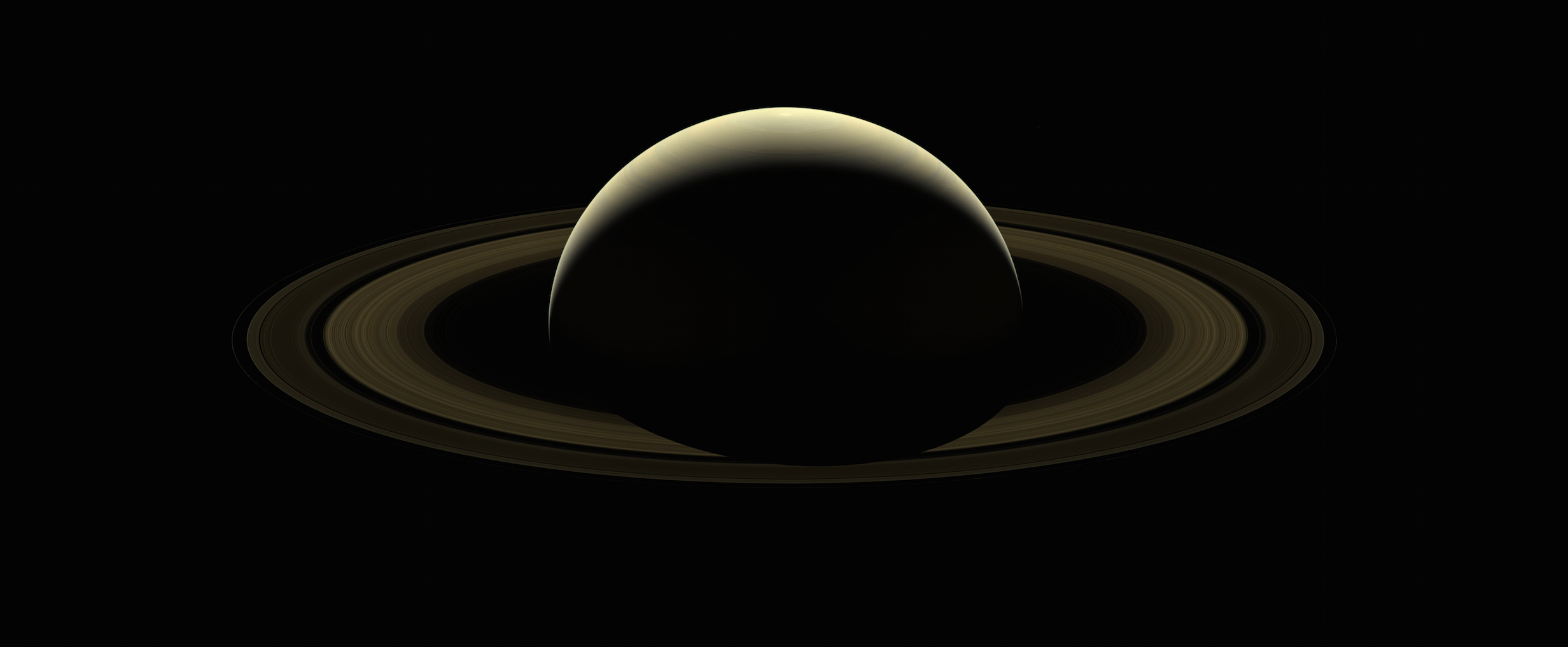
This photograph from NASA’s Saturn mission, Cassini, was created from stitching 43 wide angle shots together. Credit: NASA/JPL-Caltech/Space Science Institute
This striking image mosaic of Saturn and its rings was the last taken by the NASA’s Cassini mission before it plunged into the planet’s atmosphere in September, 2017.
The spacecraft had been used to orbit saturn for 13 years, making numerous dramatic discoveries, including liquid methane seas on Saturn’s largest moon, Titan.
Cassini’s wide angle camera took 42 red, green and blue images over two hours, covering the planet and its main rings from one end to the other, which imaging scientists then stitched together to create this photograph.
This image also includes the moons Prometheus, Pandora, Janus, Epimetheus, Mimas and Enceladus.

This labelled and brightened version of the last image shows six of Saturn’s 53 confirmed moons. Credit: NASA/JPL-Caltech/Space Science Institute
Carolyn Porco, former Voyager imaging team member and Cassini’s imaging team leader at the Space Science Institute: “For 37 years, Voyager 1’s last view of Saturn has been, for me, one of the most evocative images ever taken in the exploration of the solar system.
“In a similar vein, this ‘Farewell to Saturn’ will forevermore serve as a reminder of the dramatic conclusion to that wondrous time humankind spent in intimate study of our Sun’s most iconic planetary system.”
While you probably won’t be getting up to space anytime soon, there’s plenty of opportunities to take some great astro photographs with your feet planted on Earth.
Check out our dedicated guide here for expert tips and the low down on what kit you’ll need.
Remember to pick up this week’s magazine edition (December 2, 2017) for our feature on how to shoot the upcoming supermoon phenomenon.
[collection name=”small”]







